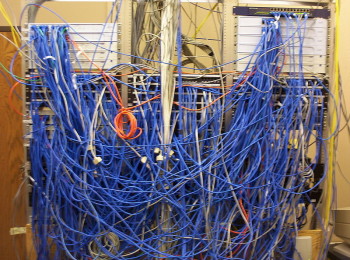 Tin box shifter Dell has launched an IoT partner programme alongside its very close chum VMworld.
Tin box shifter Dell has launched an IoT partner programme alongside its very close chum VMworld.
A spokesDell said the programme will provide pre-tested and pre-validated hardware and software packages from Dell and technology partners.
Ken Mills, general manager of IoT surveillance and security at Dell, said during an online press conference before VMworld opened that IoT is rapidly expanding and the amount of infrastructure needed to support it is growing.
“There is a definite shift in the amount of storage and compute power needed to support this transition.”
The number of connected devices worldwide is expected by some industry observers to be as high as 30 billion by 2020 and to continue to grow from there.
The wide array of devices, systems and sensors and the rapid growth of IoT are challenges for businesses looking to embrace IoT, according to Chris Wolff, who took over as head of global OEM and IoT partnerships at Dell in October 2017.
Wolff said companies often understand there are a lot of things they can do with automation and IoT technologies to help them gain insights into their data and make better business decisions, but they can struggle to take the first step.
She said that getting started wasso daunting because there are so many things IoT theoretically can do at at work. It is difficult for people to know what to do and have a conversation with the techies to find out what’s possible or feasible for my organisation.
Wolff said there was a fear that a company could “choose the Betamax instead of the VHS”
Dell claimed that it can give customers a complete package by bringing together technologies from its partners and the vendors under its umbrella.
The bundles will be sold entirely through the channel, giving partners not only another solution to offer their customers, but also a new revenue stream to take advantage of as IoT continues to grow in the enterprise.
Wolff said the programme will focus on “enabling reseller partners, who are very good at deploying IT infrastructure and managing that infrastructure to provide that same level of management and security across non-traditional devices such as refrigerator coolers”.
 Only half of cybersecurity professionals have a plan in place to deal with attacks on their IoT devices and equipment, despite that fact that nine out of ten express concerns over future threats, according to new research from the Neustar International Security Council (NISC).
Only half of cybersecurity professionals have a plan in place to deal with attacks on their IoT devices and equipment, despite that fact that nine out of ten express concerns over future threats, according to new research from the Neustar International Security Council (NISC).














